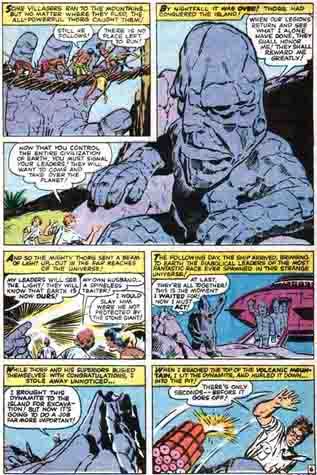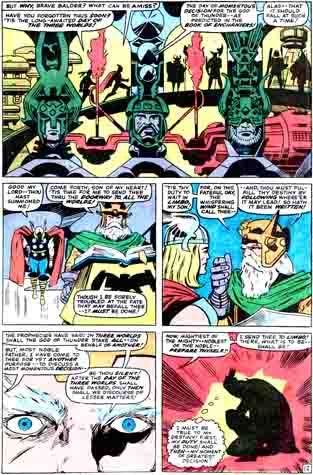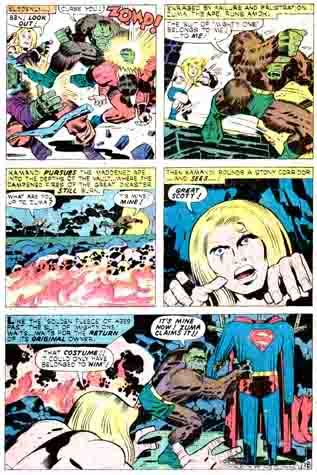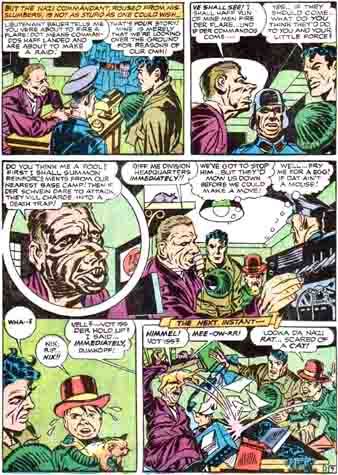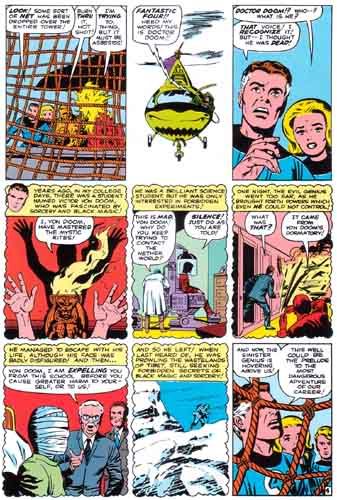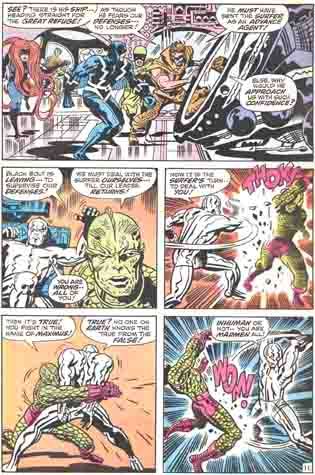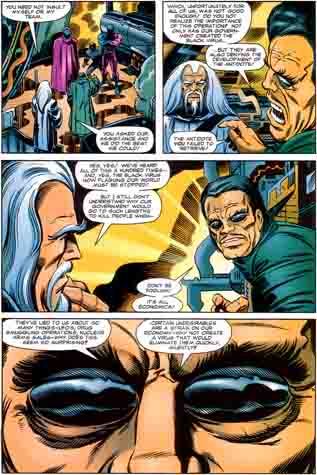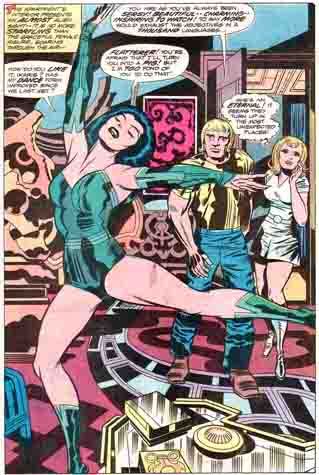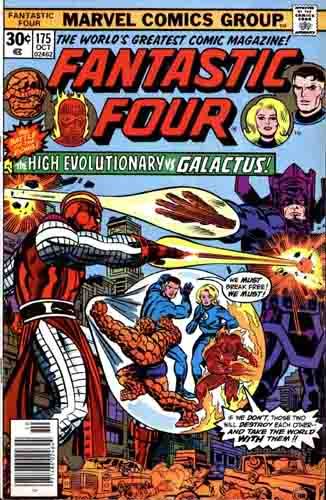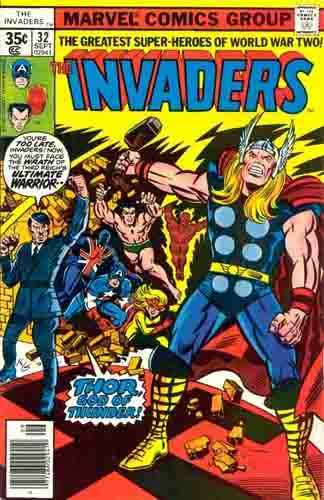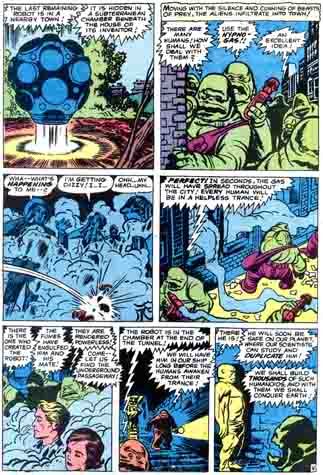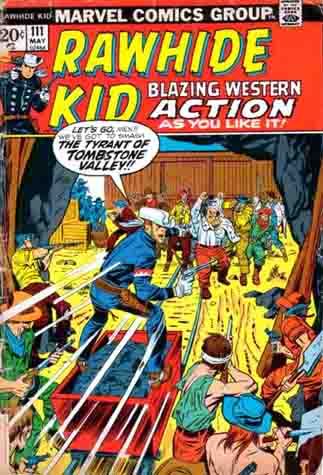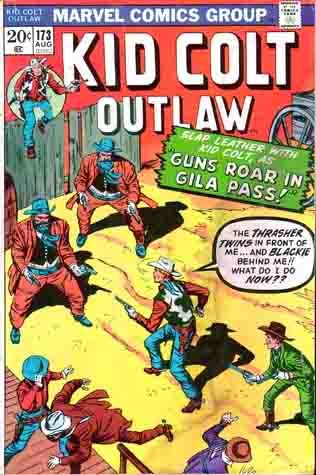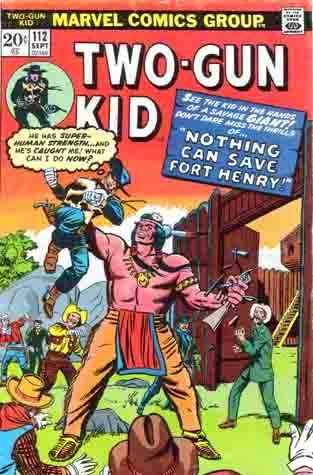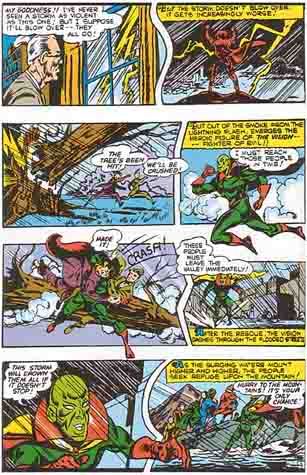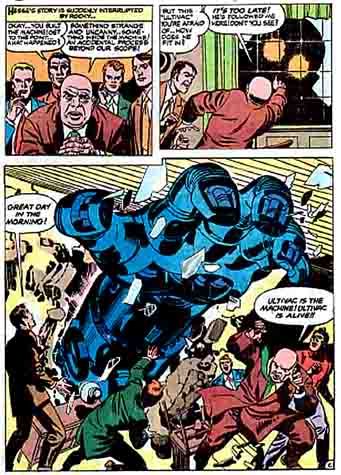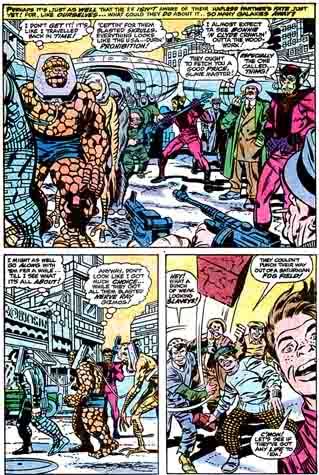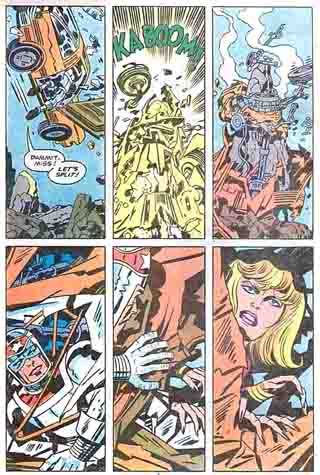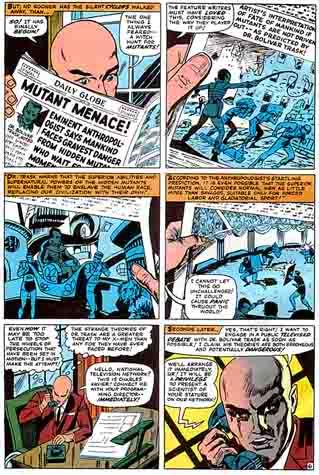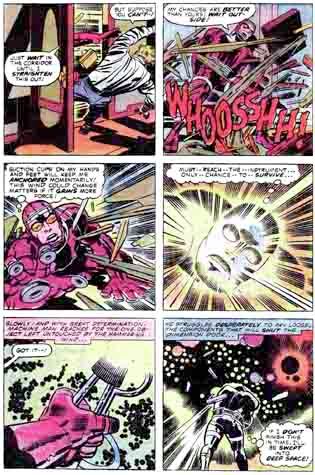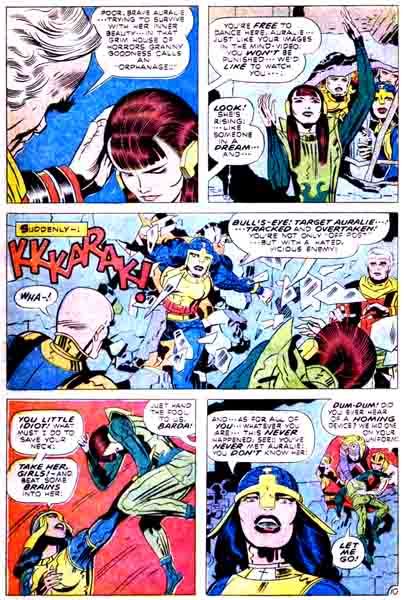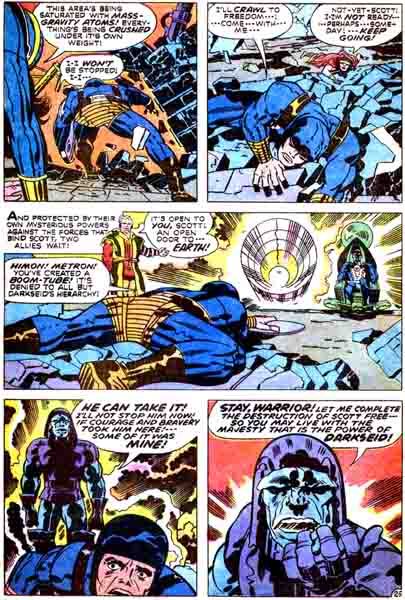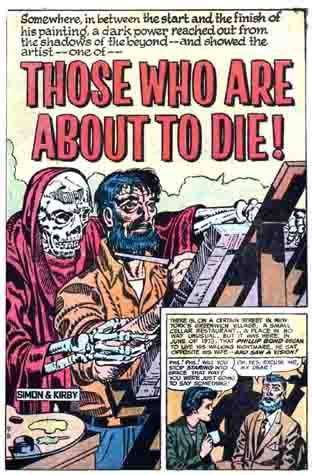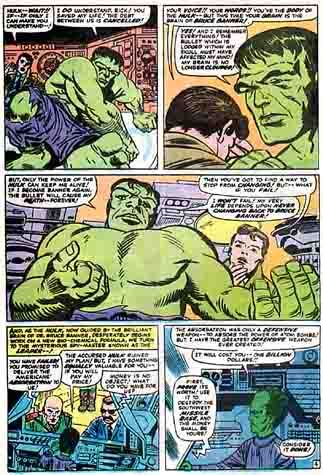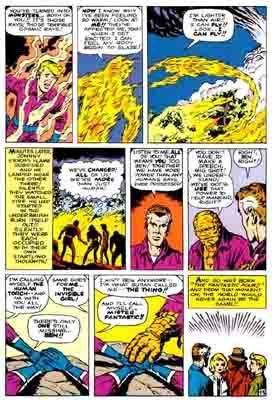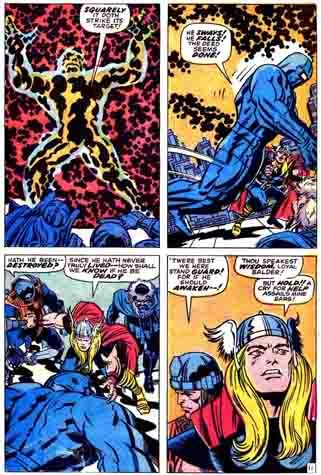
Wow. Bucketful of stuff to list here. Explain this to me. In all of 2003, Marvel published one, count 'em, one new book with substantial Kirby art. Now we get this. Not really complaining, better a flood than drought, but spread 'em out a bit, dudes.
FANTASTIC FOUR OMNIBUS Vol. 1 HC
ESSENTIAL FANTASTIC FOUR VOL. 4 TPB
MARVEL MASTERWORKS: CAPTAIN AMERICA VOL. 2
CAPTAIN AMERICA BY JACK KIRBY: BICENTENNIAL BATTLES TPB
MARVEL MILESTONES: DR. DOOM, SUB-MARINER & RED SKULL
Five books in five very different formats. I'm most excited by the over-due release of ESSENTIAL FF v4, four years after v3. Some great Kirby/Sinnott classics in there. BICENTENNIAL BATTLES is also good stuff, should look good even with the tabloid issue shrunk down. It's nice to see a MILESTONES issue with all classic material this time, which should be a good sampler of the Golden Age Masterworks books for Cap and Subby. And then there's that FF OMNIBUS book. Wow. Very tempting, moreso than the MAXIMUM FF book listed before (no word on the status of that one). I assume by oversize they mean the size of the VISIONARIES books.
I've tossed in the listing for the FF MOVIE TPB, which just says it'll include some classic FF stories in addition to the adaptation of the movie. Logically that would mean some Kirby (there are classic non-Kirby FF stories?), but you never know.
FANTASTIC FOUR OMNIBUS Vol. 1 HC
Written by STAN LEE & JACK KIRBY
Cover & pencils by JACK KIRBY
Variant Dust Jackets by JACK KIRBY & ALEX ROSS
They were visionaries. Explorers. Imaginauts. They were Stan Lee and Jack Kirby. And like their creations – the Fantastic Four – they continually strove to overcome the impossible and achieve the extraordinary. Now, the first three years of their landmark run on FANTASTIC FOUR – issues #1-30 and Annual #1 – are collected in one oversized volume. This keepsake edition also includes all original letters pages and pinups, critical commentaries, a historical overview, and other DVD-style extras – and features the best-ever reproduction of FANTASTIC FOUR #1.
848 pgs, $99.99
TRIM SIZE: OVERSIZED
Please Note: this will be a limited printing
ESSENTIAL FANTASTIC FOUR VOL. 4 TPB
Written by STAN LEE
Pencils & Cover by JACK KIRBY
Relive more of the FF's classic exploits as they stand united against Dr. Doom, Annihilus and Galactus! Featuring the first appearances of the Kree and the microversal Psycho-Man! Guest-starring Spider-Man, Daredevil, Thor and the Warlock formerly known as Him! Lee and Kirby were the ones who started it all, and they kept it going in these cosmic tales! Collects FANTASTIC FOUR #64-83 and ANNUAL #5-6.
536 PGS/$16.99
ISBN: 0-7851-1484-X
MARVEL MASTERWORKS: CAPTAIN AMERICA VOL. 2
Written by STAN LEE & ROY THOMAS
Penciled by JACK KIRBY, GIL KANE & JACK SPARLING
Cover by JACK KIRBY
Who loves seconds? We love seconds—a second sensational serving of the Sentinel of Liberty! Yes, that’s right, the Mighty Minions of Marvel are chipping the next Cap Masterworks free from its icy fifteen-year slumber and you’re invited to the homecoming party. So strap on your shield and prepare for a barrage of Stan and Jack’s best as Cap (with a little help from his friends, the Avengers) battles a bevy of baddies like the strange Super-Adaptoid—the super-powered robot with the combined powers of the Avengers. And if an android passing himself off as Cap was as odious as you thought, the Red Skull tries to convince the people of America that Cap’s turned traitor. Yikes! Don’t crawl into your fallout shelter in shame, though. Our boy will bounce back to take on a hearty helping of that horrendous head, M.O.D.O.K.., in his first-ever appearance, before taking it home in a scintillating struggle against Baron Zemo, guest-starring Nick Fury, the Black Panther and Cap's super-spy gal, Sharon Carter! Reserve your star-spangled copy today! Collecting TALES OF SUSPENSE #82-99 and CAPTAIN AMERICA (VOL. 1) #100
240 PGS. / $49.99
ISBN: 0-7851-1785-7
CAPTAIN AMERICA BY JACK KIRBY: BICENTENNIAL BATTLES TPB
Written by JACK KIRBY
Pencils & Cover by JACK KIRBY
Cap goes cosmic in this collection of the King's comics! See the Living Legend and the high-flying Falcon fight monsters and madmen in a dimension of disaster and follow up fighting a futuristic phantom! Finally, accompany Cap on a tour of history conveyed by the curious Contemplator! Collects CAPTAIN AMERICA #201-205 and MARVEL TREASURY SPECIAL FEATURING CAPTAIN AMERICA'S BICENTENNIAL BATTLES #1.
184 PGS. / $19.99
ISBN: 0-7851-1726-1
MARVEL MILESTONES: DR. DOOM, SUB-MARINER & RED SKULL
Written by BILL EVERETT, STAN LEE & ED HERRON
Penciled by BILL EVERETT, JACK KIRBY & JOE SIMON
Cover by ALEX SCHOMBURG
It’s SUPER-VILLAIN TEAM-UP revisited as MARVEL MILESTONES brings on the bad guys! In a special preview of this month’s MARVEL MASTERWORKS: GOLDEN AGE SUB-MARINER VOL. 1, Prince Namor fights single-handed the world’s first deep-sea blitzkrieg, from SUB-MARINER COMICS #1! Plus: the fantastic origin of Dr. Doom from FANTASTIC FOUR ANNUAL #2, and the first appearance of the Red Skull from CAPTAIN AMERICA COMICS #1!
48 PGS. / $3.99
FANTASTIC FOUR: THE MOVIE TPB
Written by MIKE CAREY
Penciled by DAN JURGENS
Photo Cover
The comic adaptation of the blockbuster motion picture starring Ioan Gruffudd, Michael Chiklis, Jessica Alba, Chris Evans and Julian McMahon, this collection captures all the cinematic excitement of the new hit movie – plus a selection of the classic stories that inspired the film! Forty years ago, writer Stan Lee and artist Jack Kirby created a team of adventurers like no other that had come before. Unlike previous groups of stone-jawed super heroes who got along perfectly in their pursuit of liberty and justice, the Fantastic Four bickered, argued and fought among themselves — just like a real family. Their continued adventures around the world, into outer space and throughout uncharted dimensions have pushed the limits of the Marvel Universe, consistently challenging readers’ perceptions of what a comic book could be!
120 PGS. / $12.99
ISBN: 0-7851-1809-8
